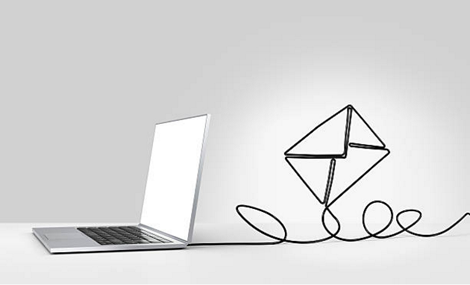3 things we can do for successful email communication

A quick search on Google using the key words ‘email’ and ‘ELT’ instantly brings up multiple lesson ideas and downloadable worksheets either offering useful email writing phrases or explicitly focusing on the differences between formal, informal and semi-formal email writing.
Seeing that there are sufficient websites focusing on email lexis, I will turn my focus to the best practices in email writing – and that goes beyond oversimplifying effective email writing to mere categorisations of formality.
The typical office worker sends and receives 121 emails per day, resulting in 13 hours of emailing per week – that is 28% of our work week! (2015 statistic) Emails are commonly used for international communication and many of those using English as a foreign language have to write emails in English. It is therefore important that we explore how different people use emails in different ways and how we can help make email communication more successful.
Several weeks ago, I ran a series of webinars on behalf of York Associates for a large international engineering firm. These webinars focused on helping the employees become better communicators in English and the client requested a session on best email practices. Email writing is a crucial part of modern day communication and if not managed well, could result in unnecessary loss of time and strained relationships.
So based on the webinar I delivered on effective email writing, here are three of my top tips:
1. Ensure your subject headers are specific
Email subject headers not only serves as a signpost to say what the email is about, but they can also aid the searching process when the reader needs to find the email at a later date. People who have an overflowing inbox sometimes decide whether to open an email or not just by looking at the header. So it is important that your subject headers are clear and specific.
Writing general headers like ‘Re: Meeting’ or ‘Re: Invitation’ does not give the reader much information about the email.
Instead consider headers like ‘Re: Change of venue for the ECC Kick-Off Meeting 9am 30th June’ or ‘Re: Invitation to Anna’s Farewell Drinks Friday 12th July’.
A university in York sent out internal memos requesting staff members to start their headers with the following type of sentence heads (in red):
- FYI: Changes to reservation procedure
- Action requested: French HOD visit on 23rd July
- Two-minute feedback required: Email Management training on 11th May
Consider this statistic: Most workers spend 1 hour per day searching through their inbox for lost emails. It’s hard to find an email if it’s not clearly labelled.
The same rule should be applied to the naming of attached files. Submitting an article to English Teaching Professional and labeling the file ‘Article’ isn’t going to help anyone. Think about how many files labelled ‘article’ our editor-in-chief receives and how confusing that might be.

2. Understand that some people are relationship-oriented whilst others are task-oriented
It’d be an over-generalization to stipulate that one should not use emoticons or talk about one’s family in a professional email. It really depends on the receiver and their view of what email communication is for. Some people see emails as a vital part of relationship building while some prefer to stick to the facts. And some are able to adapt effectively depending on who they write to.
In this table taken from Effective International Business Communication (Dignen with McMaster, 2013), we can see how people of diverse orientations might have trouble communicating via email if they stubbornly refuse to understand what the other party might be used to.
| Relationship-Oriented | Task-Oriented |
|---|---|
| Light & humorous | Serious |
| Begin with personal details | Focus directly on business issues & needs |
| Mention feelings | Stick to the facts |
| Show interest in the other person | Keep emotions out of it |
3. Accommodate and adapt to different writing styles
The internet is rampant with advice such as “Start a formal email with ‘Dear sir/mdm’ and end the letter with ‘Yours faithfully’ or If you know the name of the receiver, start your email with ‘Dear Mr Snow’ and end it with ‘Yours sincerely’.”
First of all, it isn’t always easy to pinpoint which emails should be formal, and yet websites are full of definitive statements like ‘emails to prospective employers should be formal’ (regardless of the email style of that employer or how well you might know him/her) while ‘an email asking for information from a travel agency should be semi-formal’.
Secondly, it’s hard to generalize all writing styles into the three broad categories of formal, semi-formal, and informal. So if a person uses the salutation ‘Hi’, makes small talk about the weather, avoids bombastic language, employs lots of bullet points and signs off with ‘Cheers! David’, do we immediately categorise them as being informal? Can we then safely assume that this also means they are relationship-oriented and would be happy for us to discuss our personal problems with them? Unfortunately, the answer is ‘no’.
As Dignen (with McMaster, 2013) states in his book, emails are a channel and not a style. And different people use this channel with different styles of communicating. Unlike in face-to-face meetings where we can quickly suss out the preferred style of the person we are encountering, the face-less-ness of emails poses the challenge of not being completely sure how your writing style will be perceived.
It is therefore important that we become sensitive to the preferred writing styles of our email partner, while remembering that even this is fluid and dynamic and might change, and then be willing to adapt and accommodate accordingly.
It is also worth remembering that email writing is not the same as letter writing, and therefore the same rules might not apply. For example, signing off in an email these days with ‘Yours faithfully’ might seem stuffy, distant and even pretentious. In the business world, ‘Best regards’ have now quickly become accepted as a polite and effective way of ending an email, whether it be a formal or informal one.

It was interesting to see how an adjusted search on Google using the key words ‘email communication’ brought up very different hits, displaying multiple business articles that provided a slightly different focus from the ELT websites. There was less focus on whether the email was formal or informal, and more on the clarity and effectiveness of the message. There was less splitting hairs on whether ‘Yours faithfully’ or ‘Yours sincerely’ should or should not be used if you know the receiver’s name, and more priority placed on considering the other party (may they be the sender or the receiver of the email) and avoiding possible misunderstandings.
Perhaps it is time we bridge this discrepancy by ensuring that we as teachers understand the real needs of our students when it comes to email writing and offer a diverse range of training for this very significant channel of communication so that they can become more successful international communicators.
In my next blogpost, I’ll be offering five more tips that could help you and your students tackle this all-important-but-not-often-sufficiently-dealt-with topic of email writing.
Bibliography
Dignen, B. with I. McMaster (2013) Effective International Business Communication. Collins: London.


Comments
Write a Comment
Comment Submitted